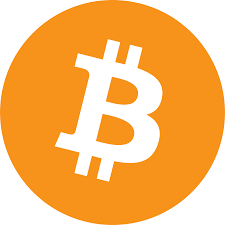Here is a chronological report on the evolving trends in blockchain technology, based on the provided article titles:
The Foundational Years: 2014-2015
In these early years, the discourse around blockchain was heavily centered on its progenitor: Bitcoin. Titles like "How the Bitcoin Protocol Actually Works," "The Bitcoin ecosystem," and "Why Bitcoin has value" clearly indicate a primary focus on understanding the mechanics, economics, and overall landscape of Bitcoin itself. Researchers were delving "Bitcoin: under the hood" and even exploring hardware specifics like "Goldstrike 1: CoinTerra's First-Generation Cryptocurrency Mining Processor for Bitcoin." There was an initial inquiry into Bitcoin's fundamental nature, as seen in "Is Bitcoin a Decentralized Currency?" and its broader impact, "Bitcoin: Benefit or Curse?". The term "Blockchain" itself began to emerge as a distinct concept, separate from Bitcoin, with a standalone title simply "Blockchain" appearing in 2015, signaling the technology's growing recognition beyond its initial application.
Beyond Bitcoin: Initial Explorations and Technical Challenges: 2016-2017
Moving into 2016 and 2017, the conversation noticeably expanded "Blockchain beyond bitcoin." While Bitcoin's underlying principles were still a topic ("How the Bitcoin Protocol Actually Works," "Bitcoin's Underlying Incentives"), the broader implications of blockchain technology started to take center stage. The concept of "Smart Contracts" made its debut, as evidenced by titles like "Research for Practice: Cryptocurrencies, Blockchains, and Smart Contracts" and "Validation and Verification of Smart Contracts: A Research Agenda," although some skepticism was also noted ("Smart Contracts - Dumb Idea").
Discussions began to shift towards the practicalities and challenges of blockchain. Scalability and security emerged as critical themes, with titles such as "On the Scalability and Security of Bitcoin" and "On Scalability of Blockchain Technologies." The potential for broader industry impact was also being considered, with "Blockchain Technologies: The Foreseeable Impact on Society and Industry" and initial thoughts on its role in finance ("Blockchain Technology in Finance") and the Internet of Things ("Can Blockchain Strengthen the Internet of Things?"). This period marked a crucial shift from merely understanding Bitcoin to exploring the independent promise and initial technical hurdles of blockchain.
The Era of Expansion and Emerging Realities: 2018-2019
The years 2018 and 2019 saw a significant broadening of blockchain's perceived applications, even as critical challenges became more pronounced. There was a strong drive to apply blockchain to diverse sectors, including "Blockchain in Healthcare," "Blockchain-Enabled E-Voting," "Blockchain and the Internet of Things in the Industrial Sector," and even "Blockchain Adoption in Supply Chain Networks in Asia." The development of smart contracts continued to mature, with titles like "Developing Smart Contracts" and specific platforms being highlighted ("John Crain on Ethereum and Smart Contracts," "Tim Coulter on Truffle, Smart Contracts and DApp Development with Truffle").
However, this period also brought a dose of reality. Questions around real-world applicability ("Why you don't see Blockchain in your Everyday Life…yet," "To Blockchain or Not to Blockchain: That Is the Question") and inherent limitations gained traction. Scalability remained a persistent issue ("Net Neutrality: Unexpected Solution to Blockchain Scaling," "On Scalability of Blockchain Technologies"), as did concerns about privacy ("How to Preserve Privacy on a Blockchain," "Privacy in decentralized cryptocurrencies") and the significant energy consumption associated with certain blockchain mechanisms ("Why cryptocurrencies use so much energy"). The discourse moved from conceptual exploration to grappling with the practical implications and limitations of integrating blockchain into existing systems.
Engineering, Practicality, and Broader Adoption: 2020-2021
In 2020 and 2021, the focus deepened on the engineering and practical aspects of building and adopting blockchain systems. While previous years identified challenges, this period saw a concerted effort to design solutions. There was a strong emphasis on smart contract reliability and formalization, with titles like "Reducing Smart Contract Runtime Errors on Ethereum," "Formal Analysis of Smart Contract Based on Colored Petri Nets," and "Automatic program analysis and verification and their applications in smart contracts." Scalability continued to be a major theme, with investigations into "Securely scaling blockchain base layers" and "Resilient and Scalable Architecture for Permissioned Blockchain Fabrics."
Integration with other transformative technologies became a clear trend. The convergence of blockchain with "Cyberphysical Systems," "Internet of Things" ("Blockchain and Fog Computing for Cyberphysical Systems"), and "Artificial Intelligence" ("Applications and Economic Impact of Machine Learning and Blockchain Technologies") was frequently explored. Beyond core technology, the societal and economic implications of blockchain were increasingly examined, including its role in "Combating Digital Deception and Counterfeit Reality" (fake news), "Healthcare" ("Blockchain Innovations for Healthcare," "COVID-19 Crisis"), "Financial Technologies for Low-Income People," and "Supply Chain Traceability in Developing Countries." This era showcased a maturing understanding, moving from theoretical potential to tangible design and real-world problem-solving.
Refinement, Interoperability, and Complex Integrations: 2022-2023
The discourse in 2022 and 2023 became increasingly sophisticated, focusing on refining existing solutions, addressing complex challenges like interoperability, and exploring advanced integrations. "Blockchain Interoperability" emerged as a key theme, with dedicated episodes and surveys on the topic ("Sergey Gorbunov on Blockchain Interoperability," "A Survey on Blockchain Interoperability: Past, Present, and Future Trends," "Cross-blockchain smart contract interoperability"). Privacy continued to be a paramount concern, with titles such as "New Privacy Practices for Blockchain Software" and "Cryptocurrency Privacy in Practice."
The application of blockchain expanded into even more specific and nuanced domains. Examples include "Blockchain's Carbon and Environmental Footprints," "El Salvador's Bitcoin Gamble," "Integrating Blockchain and Fog Computing Technologies for Efficient Privacy-preserving Systems," and its role in the "Metaverse" and "Web3." Security discussions evolved to cover specific threats like "Cryptojacking" and "Ransomware-Bitcoin Threat Intelligence Sharing." The convergence with AI became more specialized, seen in "Deep Learning and Smart Contract-Assisted Secure Data Sharing for IoT-Based Intelligent Agriculture" and "Decentralized AI: Edge Intelligence and Smart Blockchain." This period signifies a deeper dive into making blockchain robust, interconnected, and practical for a wider array of complex, real-world scenarios.
Future Horizons: AI, Advanced Cryptography, and Widespread Deployment: 2024-2025
Looking ahead to 2024 and 2025, the titles suggest a continued trajectory of deep technical advancement, strategic integration, and a focus on enabling widespread, responsible adoption. Advanced cryptographic techniques like "Zero-Knowledge Proofs" are gaining prominence for enhanced privacy and scalability. The convergence with AI is maturing from general applications to specific architectural considerations, as seen in "Decentralized Governance-Driven Architecture for Designing Foundation-Model-Based Systems: Exploring the Role of Blockchain in Responsible AI" and "Building Trust in AI: How Blockchain Enhances Data Integrity, Security, and Privacy."
The vision extends to transformative applications across various industries, including "Blockchain and Stablecoins: Driving the Future of Digital Finance," "The Blockchain for Personalized Medicine," "Online Gaming Ecosystems," and "Maritime Logistics." The emphasis on "Scalability, Security, Privacy, and Interoperability" remains constant, now approached with more sophisticated solutions like "Zk-Rollup Applications and Protocols" and "Cross-Chain Smart Contract Invocations." Furthermore, the integration with emerging communication technologies ("Beyond 5G," "KDN-FLB: Knowledge-Defined Networking Through Federated Learning and Blockchain") points to a future where blockchain is a foundational, embedded component of decentralized, secure, and intelligent systems.


































